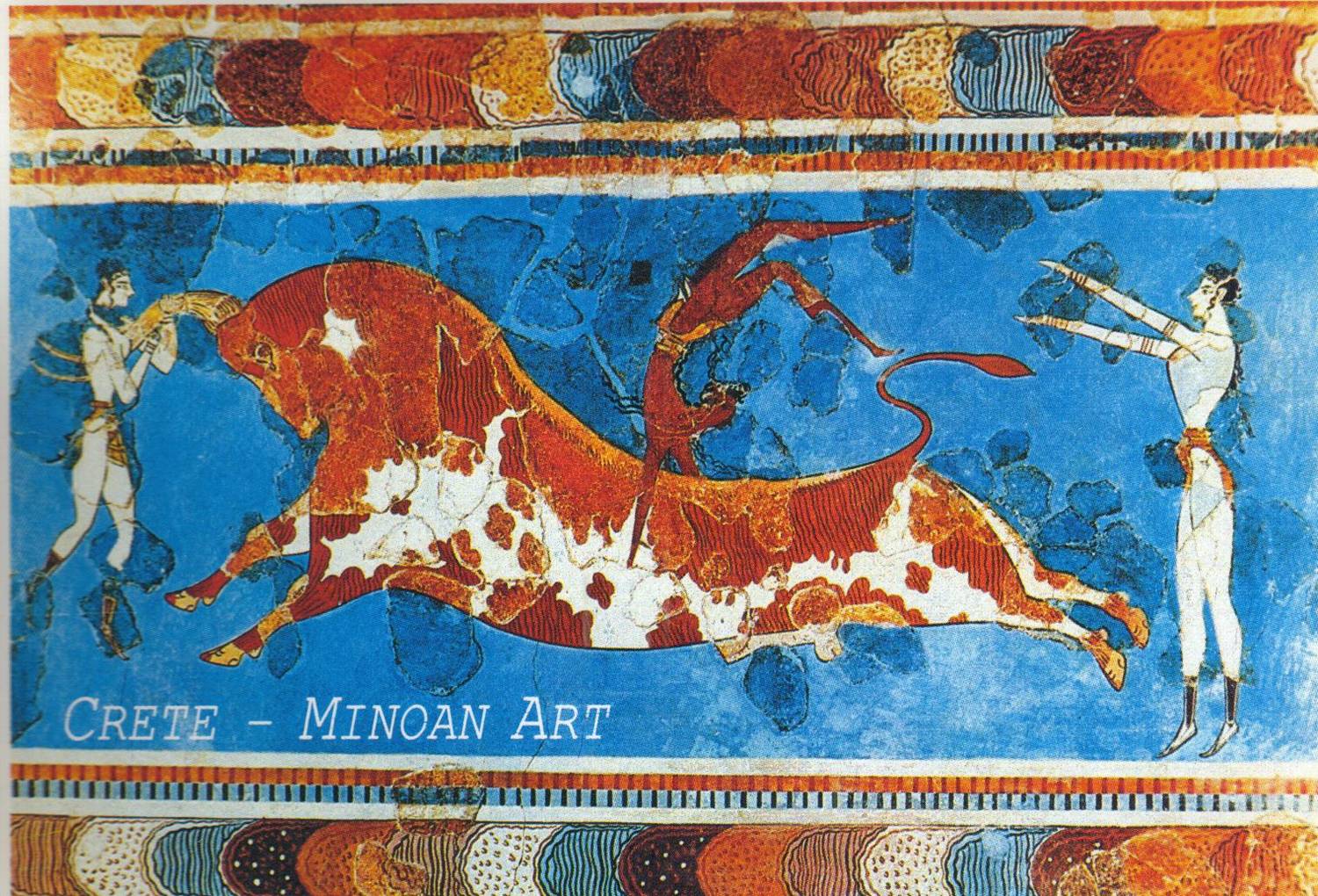
-


The Minoan bull leaper is a bronze group of a bull and leaper in the British Museum. It is the only known largely complete three-dimensional sculpture depicting Minoan bull-leaping.
Although bull leaping certainly took place in Crete at this time, the leap depicted is practically impossible and it has therefore been speculated that the sculpture may be an exaggerated depiction. This speculation has been backed up by the testaments of modern day bull leapers from France and Spain.
-
Bullfighting traces its roots to prehistoric bull worship and sacrifice in Mesopotamia and the Mediterranean region. The first recorded bull fight may be the Epic of Gilgamesh, which describes a scene in which Gilgamesh and Enkidu fought and killed the Bull of Heaven (“The Bull seemed indestructible, for hours they fought, till Gilgamesh dancing in front of the Bull, lured it with his tunic and bright weapons, and Enkidu thrust his sword, deep into the Bull’s neck, and killed it”).
Bull leaping was portrayed in Crete, and myths related to bulls throughout Greece. The killing of the sacred bull (tauroctony) is the essential central iconic act of Mithras, which was commemorated in the mithraeum wherever Roman soldiers were stationed. The oldest representation of what seems to be a man facing a bull is on the Celtiberian tombstone from Clunia and the cave painting El toro de hachos, both found in Spain.
The Correlation between Haplogroup J2 and Bull Worship
History of the Bull in Mythology
Filed under: Uncategorized
